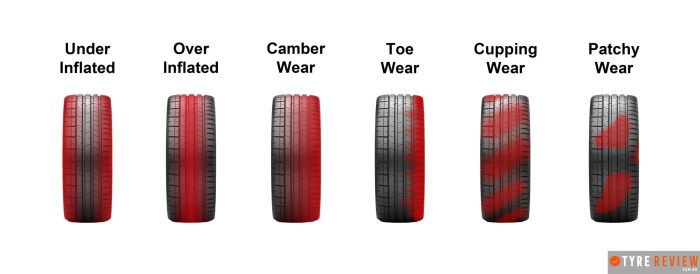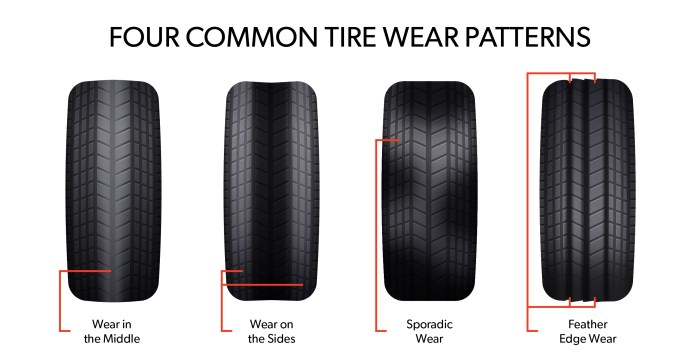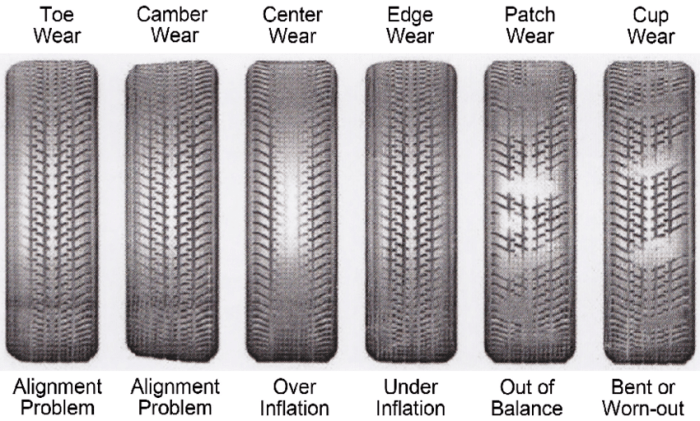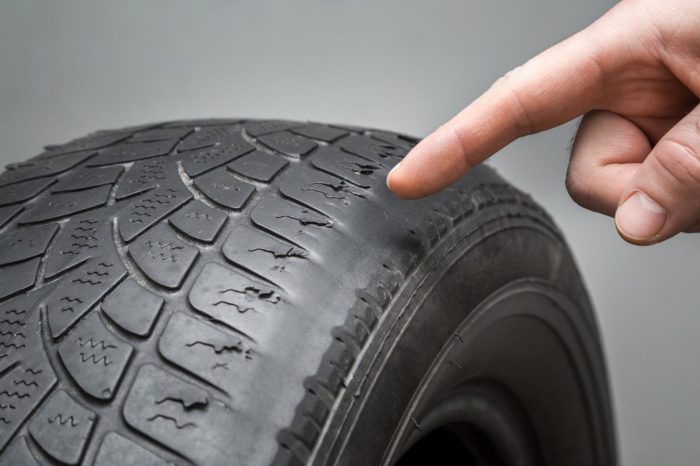Uneven tire wear may indicate problems with the suspension system, a crucial component responsible for ensuring smooth and stable vehicle handling. Understanding the causes and implications of uneven tire wear is essential for maintaining optimal vehicle performance and safety. This article explores the relationship between uneven tire wear and suspension issues, providing insights into diagnosis, prevention, and corrective measures.
Understanding Uneven Tire Wear
Uneven tire wear is a common issue that can indicate problems with the vehicle’s suspension system. Understanding the significance of uneven tire wear is crucial for ensuring optimal vehicle performance and safety.
Uneven tire wear occurs when different parts of the tire tread wear down at different rates. This can be caused by a variety of factors, including misalignment, worn suspension components, improper tire inflation, and even driving habits.
Impact of Uneven Tire Wear
- Reduced tire life and increased replacement costs
- Poor handling and reduced stability, especially during cornering and braking
- Increased fuel consumption due to increased rolling resistance
- Excessive noise and vibrations
Tire Wear Patterns and Suspension Issues

Different tire wear patterns can provide insights into the underlying suspension issues causing the uneven wear.
Inside Edge Wear, Uneven tire wear may indicate problems with the suspension system
Excessive wear on the inside edge of the tire can indicate:
- Excessive toe-in (wheels angled inward)
- Worn or damaged ball joints
- Worn or damaged control arm bushings
Outside Edge Wear
Excessive wear on the outside edge of the tire can indicate:
- Excessive toe-out (wheels angled outward)
- Worn or damaged wheel bearings
- Damaged or bent suspension components
Center Edge Wear
Excessive wear on the center edge of the tire can indicate:
- Under-inflation
- Overloading
- Worn or damaged shock absorbers
Suspension System and Tire Wear Diagnosis

Diagnosing suspension issues based on tire wear patterns involves a thorough inspection of the suspension components.
Inspect the following components for signs of wear, damage, or misalignment:
- Ball joints
- Control arm bushings
- Wheel bearings
- Shock absorbers
- Struts
Regular tire inspections and suspension maintenance are crucial for detecting and addressing suspension issues that may lead to uneven tire wear.
Addressing Suspension Issues: Uneven Tire Wear May Indicate Problems With The Suspension System

Addressing suspension issues that may be causing uneven tire wear involves taking the following steps:
- Proper wheel alignment: Adjusts the angles of the wheels to ensure even tire wear.
- Tire balancing: Distributes weight evenly around the tire to reduce vibrations and uneven wear.
- Replacing worn suspension components: Damaged or worn components can cause misalignment and uneven tire wear.
Preventing Uneven Tire Wear

Preventing uneven tire wear and maintaining optimal suspension performance involves:
- Regular tire rotations: Distributes wear evenly across all tires.
- Proper tire inflation: Maintains the recommended tire pressure to prevent under- or over-inflation.
- Avoiding overloading: Exceeding the vehicle’s weight capacity can put undue stress on the suspension and tires.
- Proper driving habits: Avoid aggressive driving, sudden acceleration, and hard braking.
Query Resolution
What are the common causes of uneven tire wear?
Uneven tire wear can result from various factors, including improper wheel alignment, worn suspension components, incorrect tire inflation, and unbalanced tires.
How can I prevent uneven tire wear?
Regular tire rotations, maintaining proper tire pressure, avoiding overloading, and adhering to recommended driving habits can help prevent uneven tire wear.